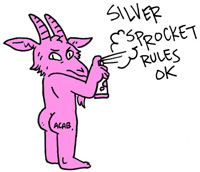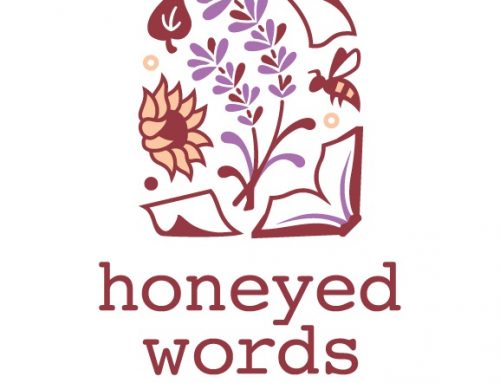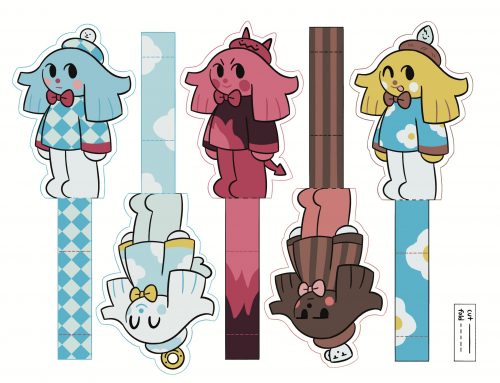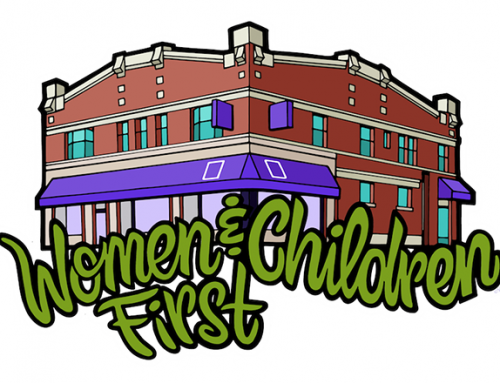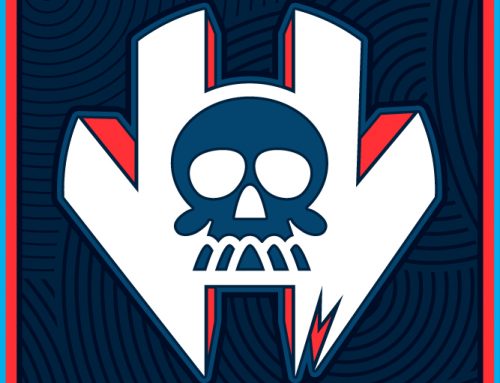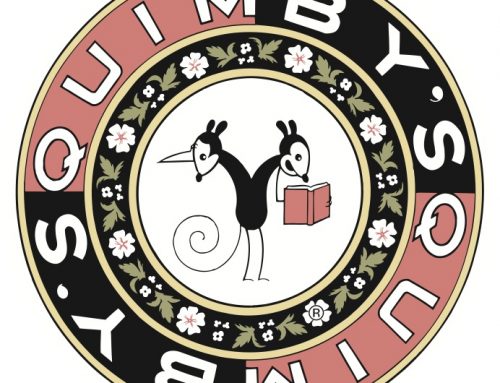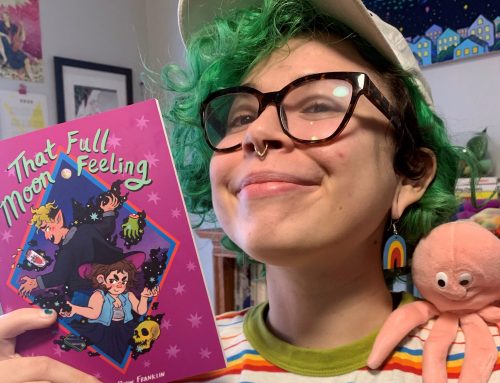Navigating this life unscathed is no easy feat, and no one knows that better than Meg Has Issues. Her contribution to As You Were #3 is intense as they come, and deals with issues of depression, mental illness, and bipolar disorder. Yet in spite of hardship, Meg is a survivor.
Keep reading to uncover her advice to people who are struggling, why she doesn’t set standards for success, and why cats are sometimes the best therapy.
Interview by Natalye for Silver Sprocket
What was the course of events that led you to contributing to As You Were?
I was at STAPLE! Independent Media Expo a couple of years ago when I met Mitch Clem. My best friend Dave was a huge fan of his and had introduced me to Nothing Nice To Say. So as a friendly gesture, I asked Mitch to take a picture with me holding up a little sign that said “Suck it Dave.” I ended up hanging out with Mitch during the show and giving him a copy of my book. He emailed me a little while later asking me to be part of As You Were. I haven’t stopped freaking out about being picked to be in something so cool since then. I’m still amazed that I keep getting asked for more.
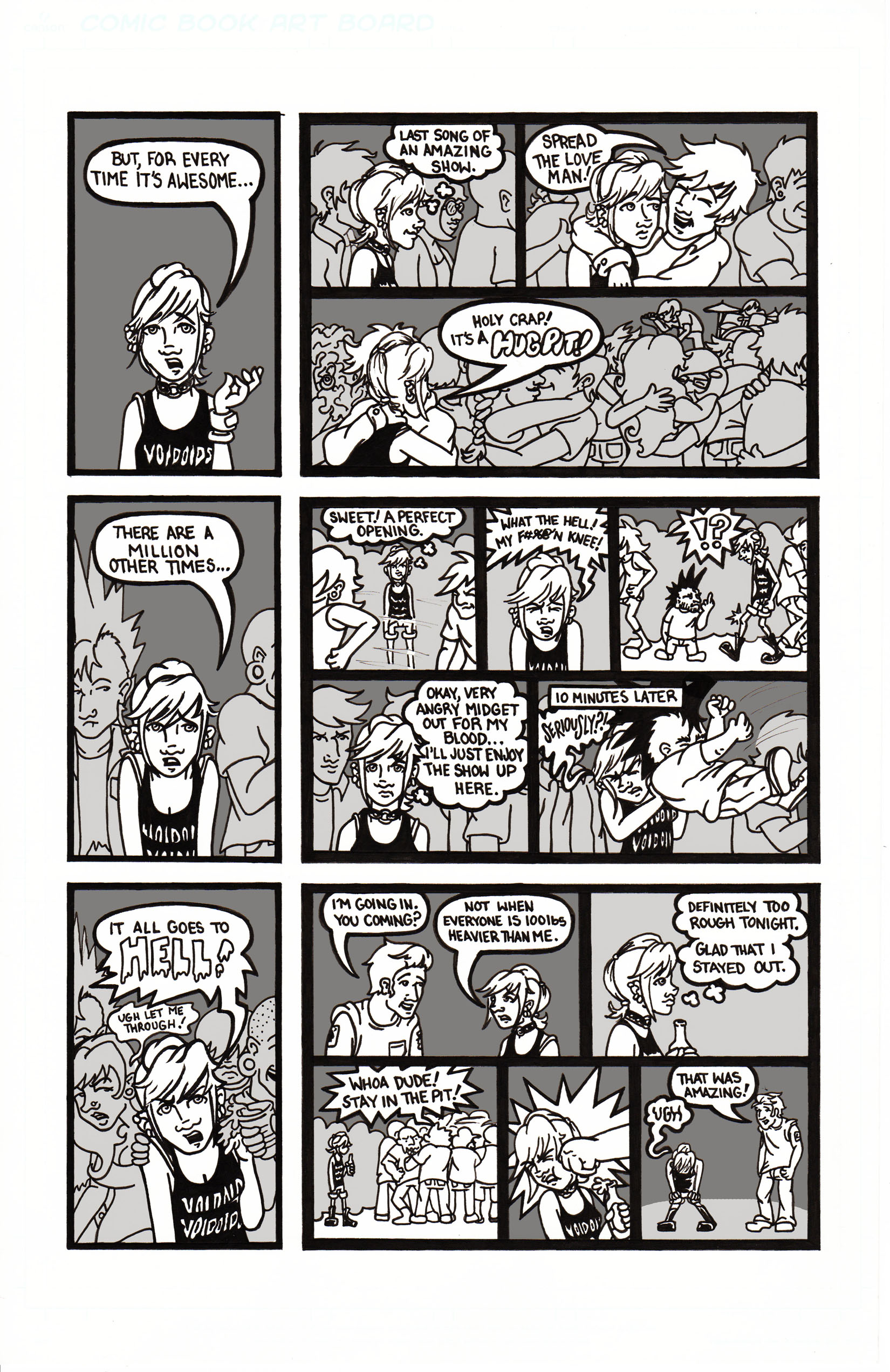
If you were a cat, what would you be like?
I’d like to think I’d be like my cat: fluffy, friendly, and just plain awesome. More [likely], I’d be one of those little street kittens that you take home, and they’re really sweet sometimes but then bug out, hide under the bed, or run into walls for no reason. Either that or a munchkin cat—you know, the corgis of the cat world. It’s hard to think of another type of cat that would manage to match my level of awkwardness.
In addition to painting and drawing, you also make artsy things, which you sell in your Etsy shop. When you’re feeling creative, what medium do you prefer working with? Is there any other form of craftiness/art you like or that you want to try out?
Drawing and painting is still my go-to. Whenever I have something I need to think about or express to others, I tend to do it through comics, so there’s less chance of me being misunderstood. I’ve made a huge point of trying to learn every crafty thing that I get the opportunity to. Lately I’ve been sewing a lot more. Making stuffed animals and embroidering things helps keep my mind from freaking out about all the stuff that I can’t fix. When I have more time, I’d like to get back into prop making, specifically casting and molding items. I’ve never been very good at sculpting, but I love being able to make something that was just an idea into a real item, ready to be used.
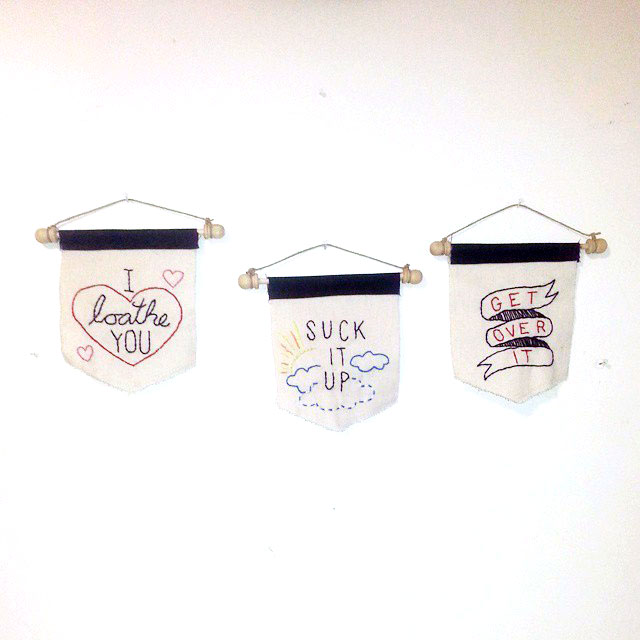
Last year you ran a Kickstarter project for your book, Cat Therapy, which was inspired in part by your cat, Dot. What was that process like? What were the biggest challenges for you? What is the cutest thing Dot has ever done?
Cat Therapy has ended up being a very odd yet, rewarding project. I still have a bit of trouble telling the story behind it, even though I end up telling it all the time. It started out when I was in a treatment center after my suicide attempt. I made a few friends in there. One of the things that I had a lot of [trouble] with was focusing on myself and what I needed to do when people I cared about around me were having trouble or were upset. I tend to draw things when I can’t express things through words, so I ended up drawing my friends kittens on little notecards to cheer them up. I kept making more so that they lined up with the interests of different people that needed cheering up. If I saw [people] in the hallway who [were] having a hard day, I’d just sit there and show them pictures of cats until they smiled. It worked almost every time. By the time I finished the program, I had around 80 cat drawings and a bunch of people asking me for a book. I had nothing to loose, so I kickstarted it and it’s been crazy since then.
The biggest challenges on the project were not knowing how to do my own print layouts for a project this large, and shipping. I had everything ready to go, and then the first person who was helping me just stopped talking to me the week I was supposed to send in all my files to meet deadline. I had no idea how long things took, so I had no backup or anything I could do besides apologize and find another person ASAP. Since then, I’ve learned how to do layouts myself. Then I had to send out around 200 orders, most of which were personalized, to several different countries. I did most of the shipping myself, just ‘cause I was afraid of what might go wrong. Everything got to where it was going, but it also took a lot longer than expected, and I had to replace a few books. I also paid for all of the shipping out of pocket, since I decided to produce a nicer book rather than have the money left over for shipping. So biggest tip for anyone out there trying to get a book made: OVERESTIMATE EVERYTHING. Your time, your money, your sanity—always assume it’s going to take more than you expect, so that way it doesn’t leave you unprepared.
Dot is a huge ball of ridiculous fluff. It’s hard to think of something she does that isn’t cute. If I had to pick one cutest thing it would probably be her habit of sitting in my lap when I’m working. When I was painting a piece for a solo show making fun of modern art, Dot stuck her paws in the paint and started walking across the canvas. My mom now owns that painting. I still don’t think she realized my cat painted all the parts she likes.
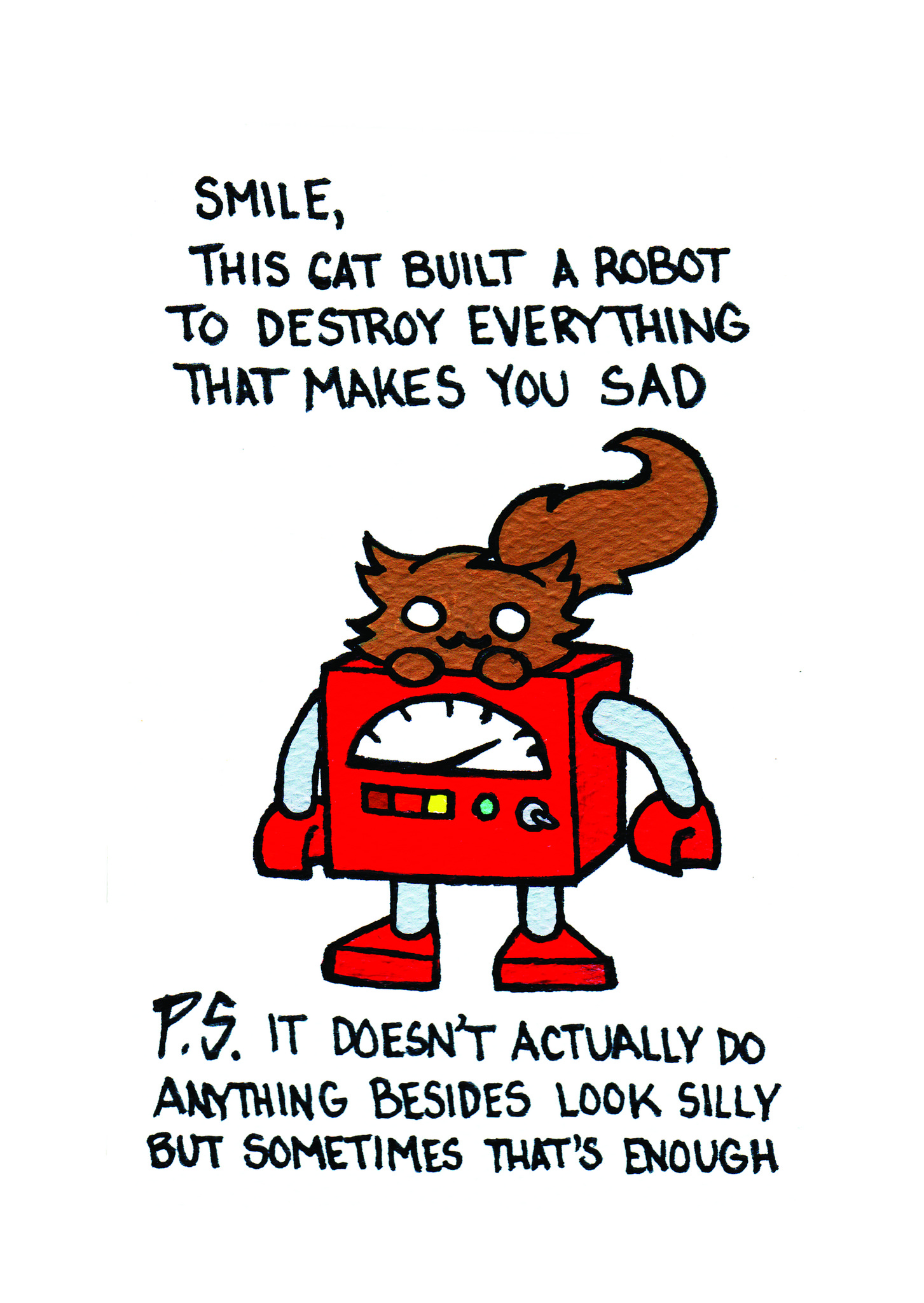
Your contribution to As You Were #3 deals with issues of depression and suicide. But at the end, you talk about hope, which is a powerful emotion. What’s the best lesson or piece of advice that you could give to others who struggle with these kinds of things as well?
This is going to be a long answer and I’m sorry for that.
So, I went without help for the better part of a decade, because I had people tell me as a teenager that I would never live a normal life and that there was something wrong with me because I have a mental illness. My mistake was denying myself help because people made assumptions based on social stigmas. Programs suck, hospitalization sucks, having a chemical imbalance you can’t control sucks, but saying “fuck it, it’s fine, that’s the way things are” sucks even more, because I’d be denying myself control over my situation. Not everything doctors or psychiatrists tell you is going to work or work straight away. Part of getting to the place you need to be at is having the patience to try everything. That’s my biggest [piece of] advice. TRY EVERYTHING AND KEEP AN OPEN MIND WHILE DOING IT. People assume that what works for one person is going to work for another, and it’ll get your hopes up or frustrate the hell out of you if someone assumes that they have found the answer. It’s different for everyone. Therapy is not going to work unless you find a way to make the things you’re being taught relate to you. The two things that anger me the most are when people give up ’cause “fuck it, it’s not getting better,” or when people tell you to blindly believe it’s going to get better and the knowledge of that “fact” will make it all OK. Here’s the secret: Whether things get better or not is always in your hands, even when you feel you have no control. Yeah, life can suck, things can go wrong, stuff can happen to ruin your day that you have no control over, but you do have the control [over] how you react to it. It’s ultimately your choice, whether it’s a bad thing or a chance to make something better. That’s just how I see it and it’s different for anyone. If anyone gets angry with me for that or is having trouble with these issues, you can email me. I try to always respond when it comes to stuff like this, ’cause I would have liked it if someone did that for me when I needed it.
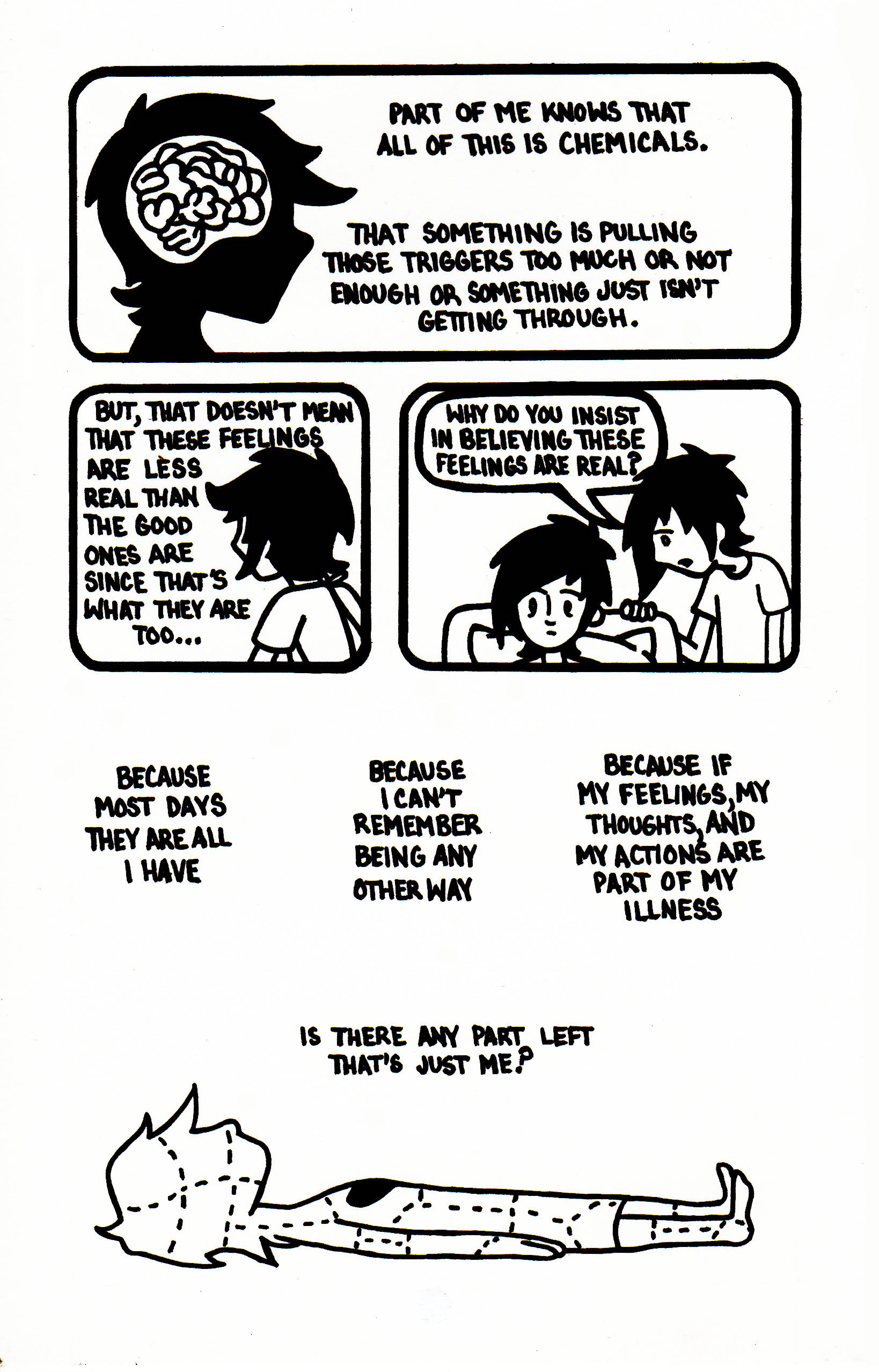
One of your comic projects, Damn Hipsters… well, it’s sort of self-explanatory. But where do you get the inspiration for it? Do you solely use anecdotes based on what you’ve seen or experienced firsthand, or have the characters come to life more and evolved into individuals of their own?
Damn Hipsters started out as a joke class assignment in college that ended up becoming a habit. Whenever I went out drinking, I’d write down the most ridiculous things I overheard and work them into comics the next day. I’ve gotten dumped before for using things that someone I was involved with said. The characters are vaguely based on people I’ve met, but have evolved into their own personalities. Thom is actually mostly based on me. Margot started out being based on a guy I knew and evolved into her own person pretty fast. People get creeped out ’cause I do have Margot moments where I’ll start speaking and acting like her while I’m working out dialog or if I’m in a situation she’d have a good zinger for. I do feel like they’ve become real people in more than one way. One day, two people walked into the gallery I work in. They looked exactly like my characters, and the first thing they did was pick up my book and start freaking out over how much it sounded like them. They are real life roommates that talk and act the way my characters do. We’re friends now. It’s weird. I don’t know whether I willed them into existence or if I was somehow channelling them. I’m too afraid to ask.

You’ve mentioned tacos in passing, and some of your art deals with this delicious food as well. What’s your favorite kind of taco? If we were to visit you in Georgia, where would you take us to eat tacos?
It’s hard to pick a favorite taco. It’s like having to pick a favorite child; you kinda have a favorite, but you don’t want to say anything ’cause the others might get mad, or at least that’s what I assume, [me] being a childless cat lady. I’d have to say breakfast tacos. It’s all the best parts of a taco, plus it’s acceptable to pair with coffee, and that makes a winner in my book. There’s a tiny place in Decatur called Bad Dog Taqueria. They are amazing. They have tacos that are actually samosas in a taco shell, tacos made with mashed potatoes, and just plain awesome service. I started going there when I heard the rumor that they had invented a mac and cheese taco. I have never seen this mythical taco, but I will keep going back in the hope that one day it will become real and fulfill all my taco dreams.
With the Internet, it makes it easy to share your art with a wider audience, but it also makes it more difficult in the sense that anyone can use it as a public forum, which makes it difficult for some people to wade through and find the worthwhile stuff. What do you think are the pros and cons of this form of sharing?
Pros: Comics and other media are more accessible; it’s easier to get feedback on your work; you have a lot more chances of people finding you; and you can find other people to work with no matter what you’re doing.
Cons: Since everyone can make and post things, it’s hard to find what you’re looking for or stumble across new things unless someone you know introduces you to them; there is a hell of a lot of negativity, since being anonymous makes people more comfortable with being mean; it’s also easy for people to take your work or post it without consent in ways you never wanted it used.
Even though I have most of my stuff online, I’m still always wary. It’s a little scary putting yourself so out there when anything could happen. The Internet is amazing in the fact that it’s a source of never-ending potential. The awkward part about potential is people forget that it can be potential for good or potential for bad. I love the ability to put my work out there and the fact that people I would have never had contact with before can share my stuff and talk to me about it. I’m a rather socially awkward person so I probably would not have a career as an artist without the Internet. A lot of times, the only thing that keeps me going is having [people] email me about how much my comic meant to them, or how much someone they know loved it. It’s hard to get that in real life. So there [are] tons of amazing things about the Internet, [but] that said, it’s also led to bad stuff. I used to draw a journal comic online, and I had to stop because someone was using it to stalk me. I’ve had my work ripped off, been sent hate mail, and had to deal with a lot of flack because of Internet stuff as well. It’s not going to stop me from using it to share my work, but I am a lot more careful now.
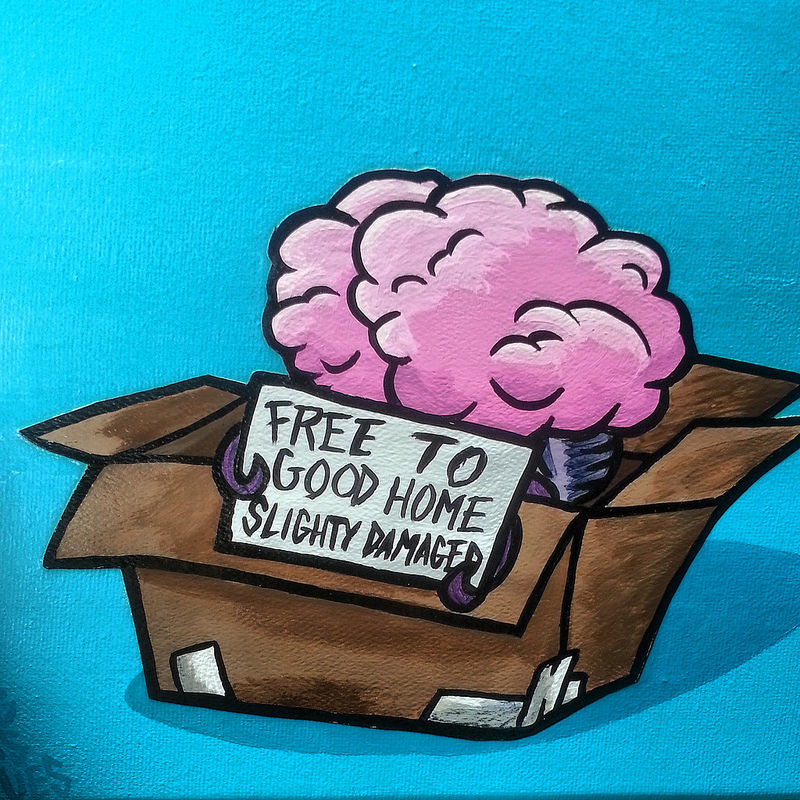
How do you define success?
I don’t. I personally choose not to define success, because I find it limiting, and in some cases, hazardous to my mental health. I know that sounds weird, so I’ll explain. Since I’m bipolar and have huge struggles specifically with the depression side, if I get too attached to the idea of something being successful, then I’ll lose all sight of the other things I need to do in order to balance my life just to succeed, or I’ll end up throwing out all of the good things I did if I didn’t meet my goals. Even if I do something I’m proud of, if I put that label on it, my brain automatically goes: “Yeah, that was a success, but you could have done so much better.” I try to just manage in terms of “I did it.” Whether it’s good or bad is up for grabs, but doing something at all is a good start for me.
Even the most well adjusted among us need some cat inspiration every now and again. To keep up with the adventures of Meg Has Issues and Dot, be sure to check out Meg’s home on the web. While you’re at it, be sure to snag a copy of As You Were, if not for yourself, then for that someone special in your life.
